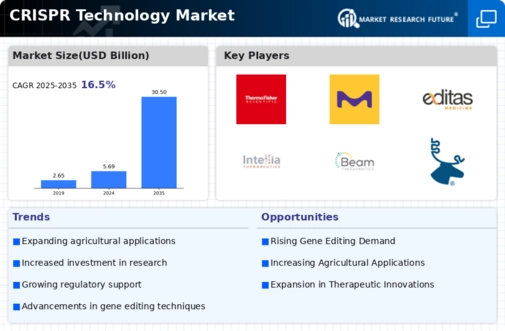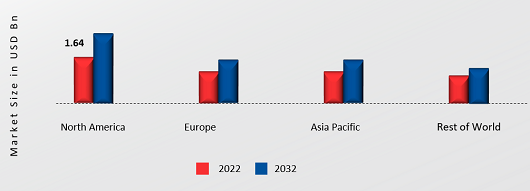The CRISPR Technology market continues to grow due to major players investing heavily in R&D to expand their product offerings. Market participants also participate and take several strategic initiatives to strengthen their footprint. The industry has seen significant developments with the launch of new products, agreements, mergers and acquisitions, higher investment, and collaboration with other companies. For the CRISPR Technology industry to expand and prosper in a market that is becoming more competitive and dynamic, it must offer reasonably priced products.
Manufacturing locally to save operational costs is one of the main business tactics manufacturers adopt in the worldwide CRISPR Technology industry to support clients and expand the market sector. The CRISPR Technology industry has greatly benefited medicine in the last few years.
Major players in the CRISPR Technology market, including Thermo Fisher Scientific, Inc. (US), Merck KGaA (Germany), Agilent Technologies, Inc. (US), Genscript Biotech Corporation (China), CRISPR Therapeutics AG (Switzerland), Editas Medicine (US), Intellia Therapeutics, Inc. (US), Beam Therapeutics Inc. (US), Caribou Biosciences, Inc. (US), Lonza Group, Ltd. (Switzerland), Danaher Corporation (US), PerkinElmer, Inc. (US), Hera Biolabs (US), OriGene Technologies, Inc. (US), Cellecta, Inc. (US), Mammoth Biosciences, Inc. (US), Applied StemCell (US), New England Biolabs Inc. (US), ToolGen Inc. (South Korea), GeneCopoeia, Inc. (US), and others, are attempting to increase market demand by investing in research and development operations.
Thermo Fisher Scientific Inc. supplies tools for medicine, analytical equipment, consumables and reagents, software, and services for handling difficult analytical problems in clinical, research, and diagnostic labs. It provides answers for synthetic biology, flow cytometry, and cellular biology. Products from the company include technologies for molecular biology, genetic sequencing, electron microscopy, protein analysis, and mass spectrometry. The company provides services to the environmental, industrial quality, and process control sectors, pharmaceutical and biotech industries, academic and research institutions, clinical diagnostic labs, government agencies, etc. It offers its goods and services through third-party distributors, e-commerce, and a direct sales force.
Thermo Fisher Scientific Inc. introduced the new Gibco CTS TrueCut Cas9 Protein, made under GMPs, in April 2022 to facilitate genome editing for manufacturing and research purposes, including the study of CAR T-cell therapy.
The biopharmaceutical firm Merck & Co Inc. is dedicated to researching, developing, producing, and distributing pharmaceuticals, vaccines, biologic therapies, and animal health products. It provides prescription medications for treating diabetes, cancer, immune system problems, infectious diseases, and cardiovascular conditions. The company sells vaccinations, poultry, cattle, and aquaculture supplies, among other items related to animal health. Merck supplies pharmaceuticals to wholesalers, retailers, hospitals, government organizations, and managed health care providers. It also supplies veterinarians, distributors, and animal producers with animal health products.
In October 2020, Merck announced that it had signed licenses for its CRISPR technology with Takara Bio USA, Inc., a biotechnology company based in Mountain View, California, USA, and PanCELLa, a cell treatment company based in Toronto, Canada.
























